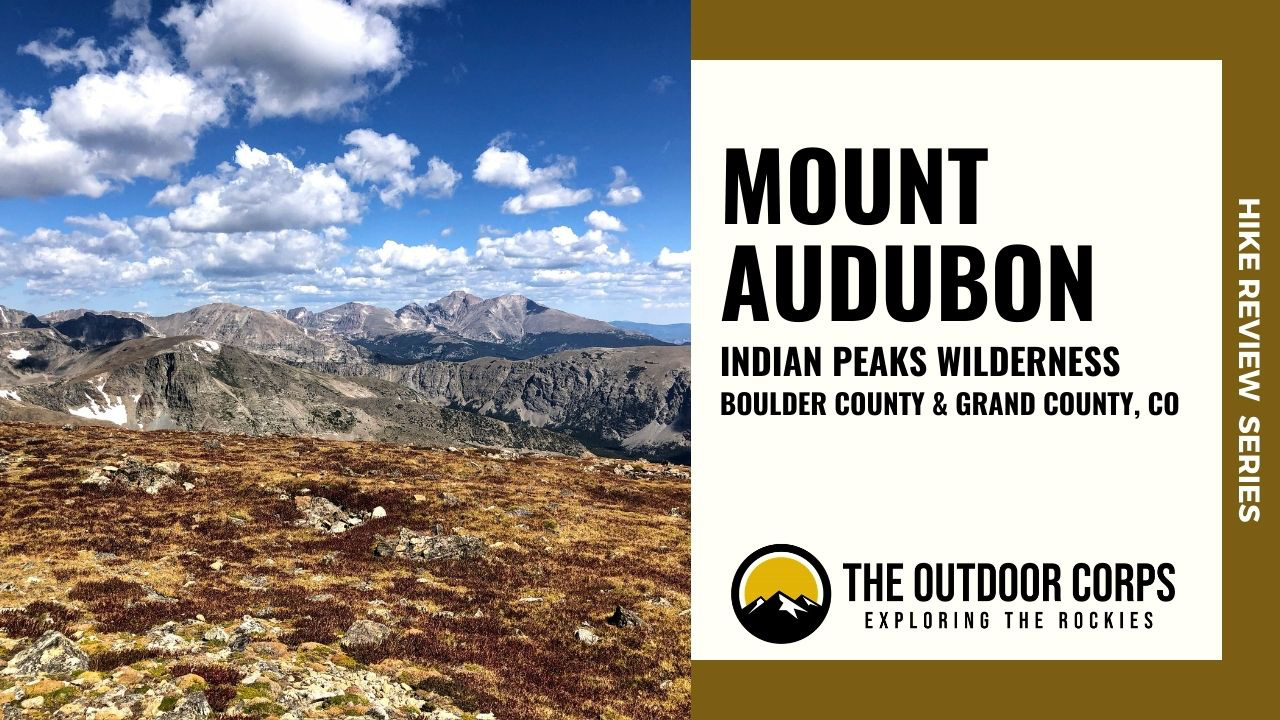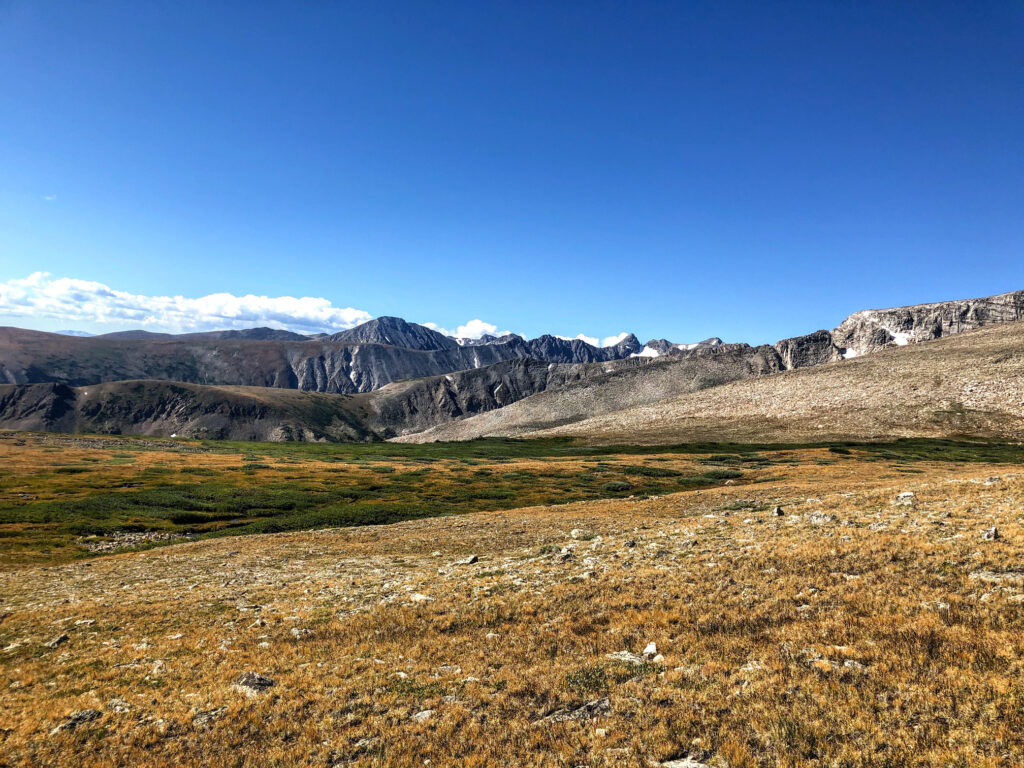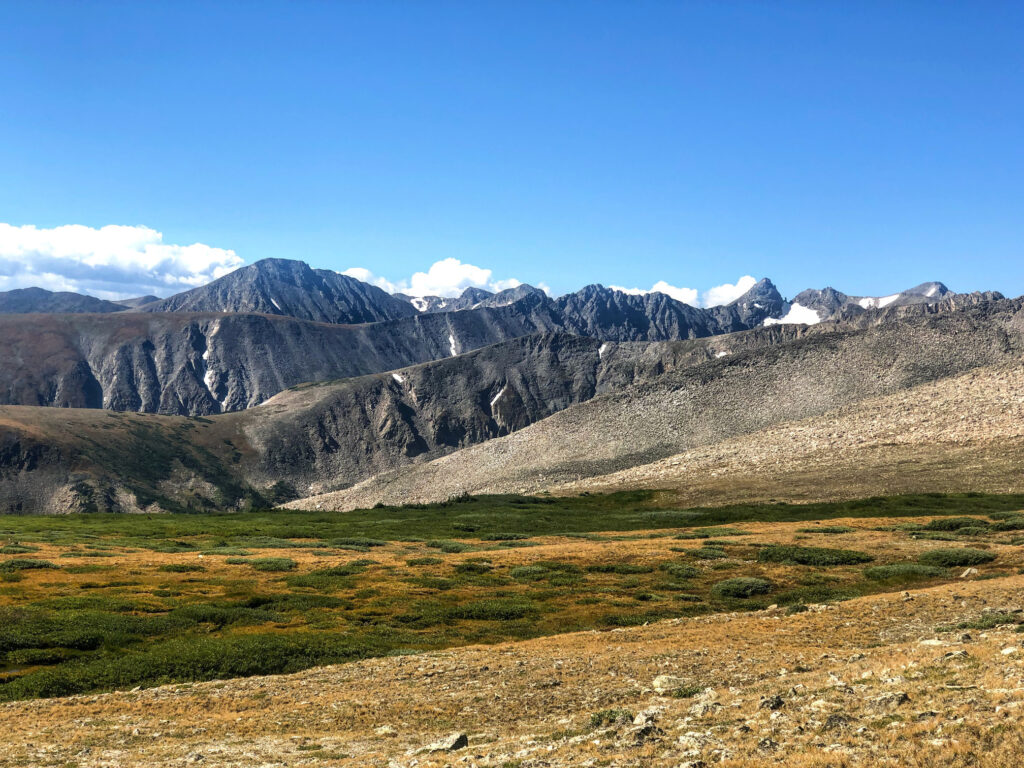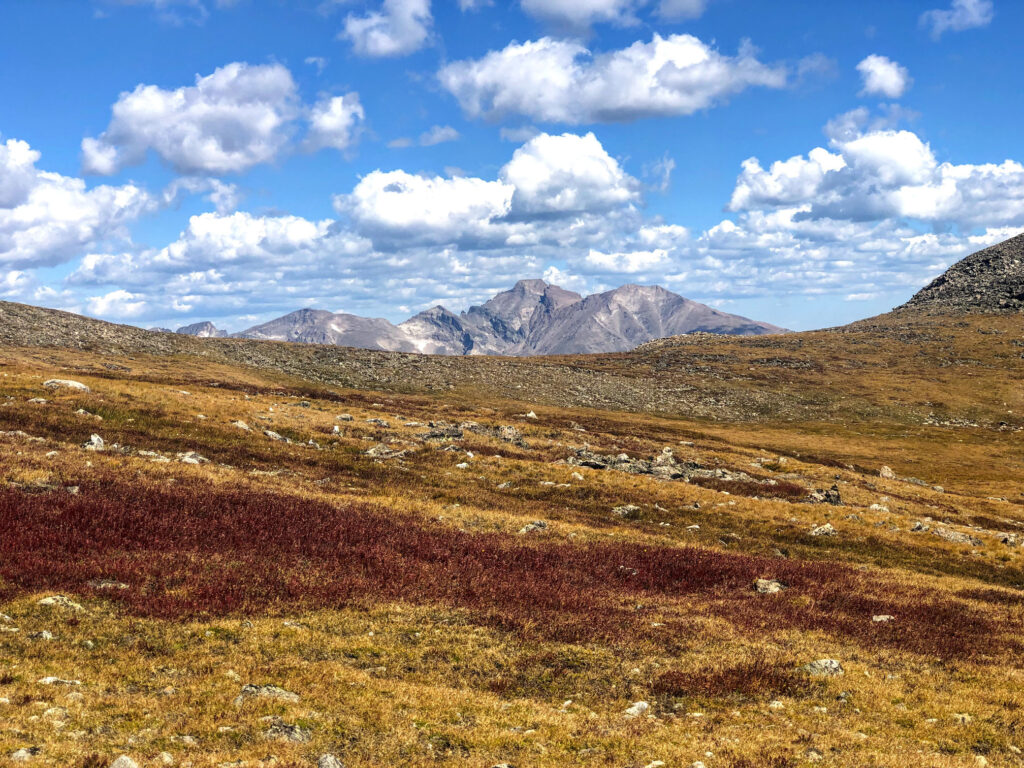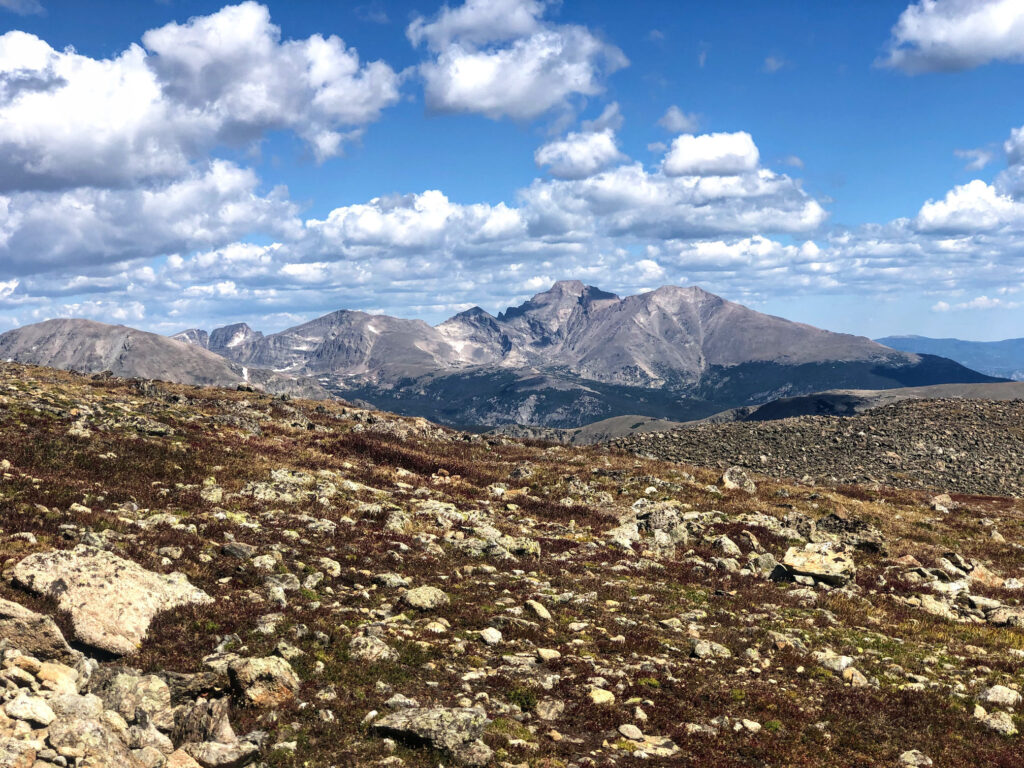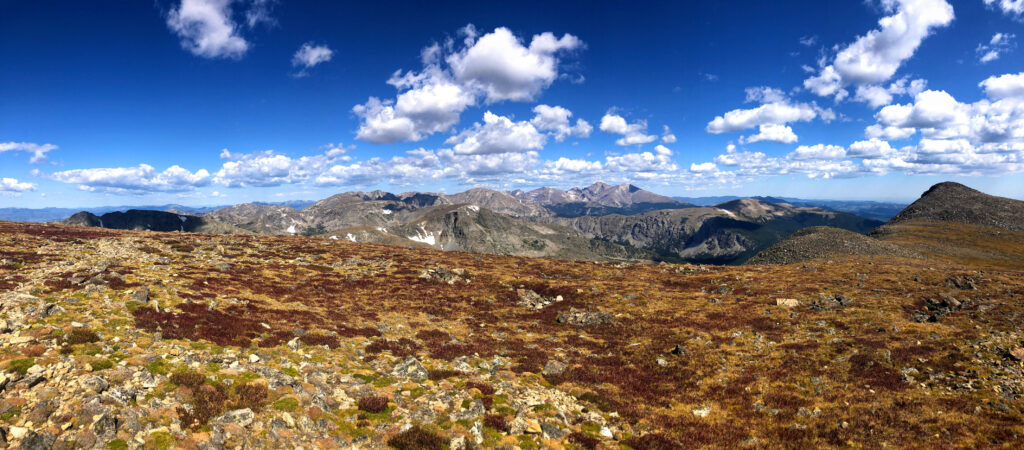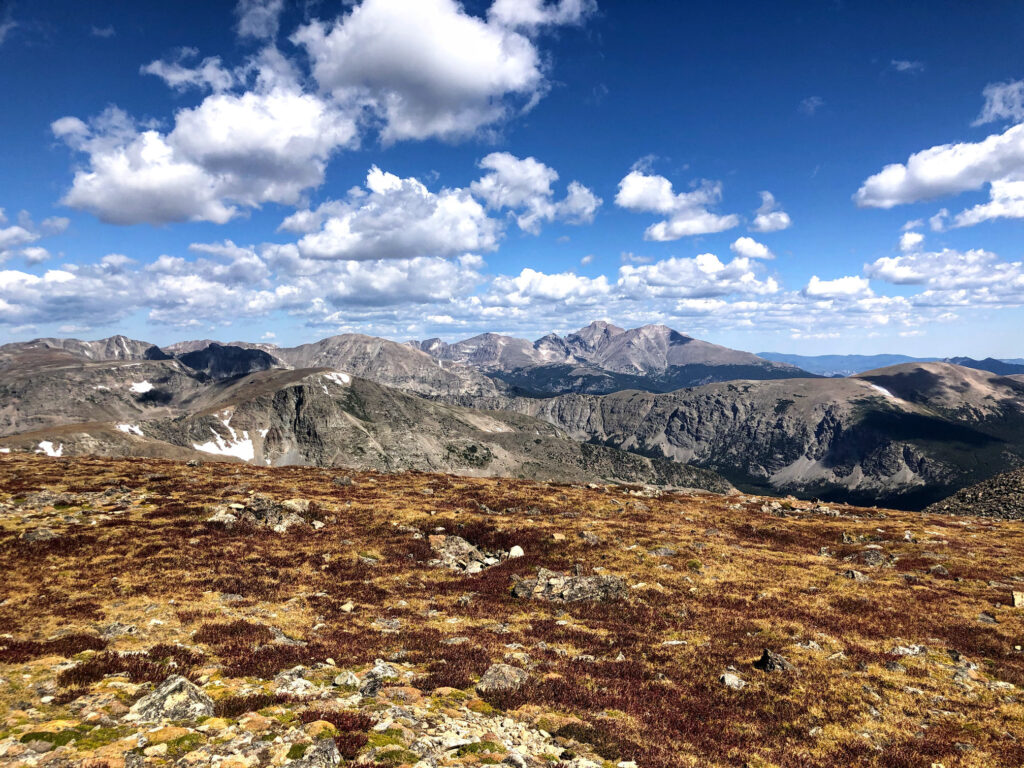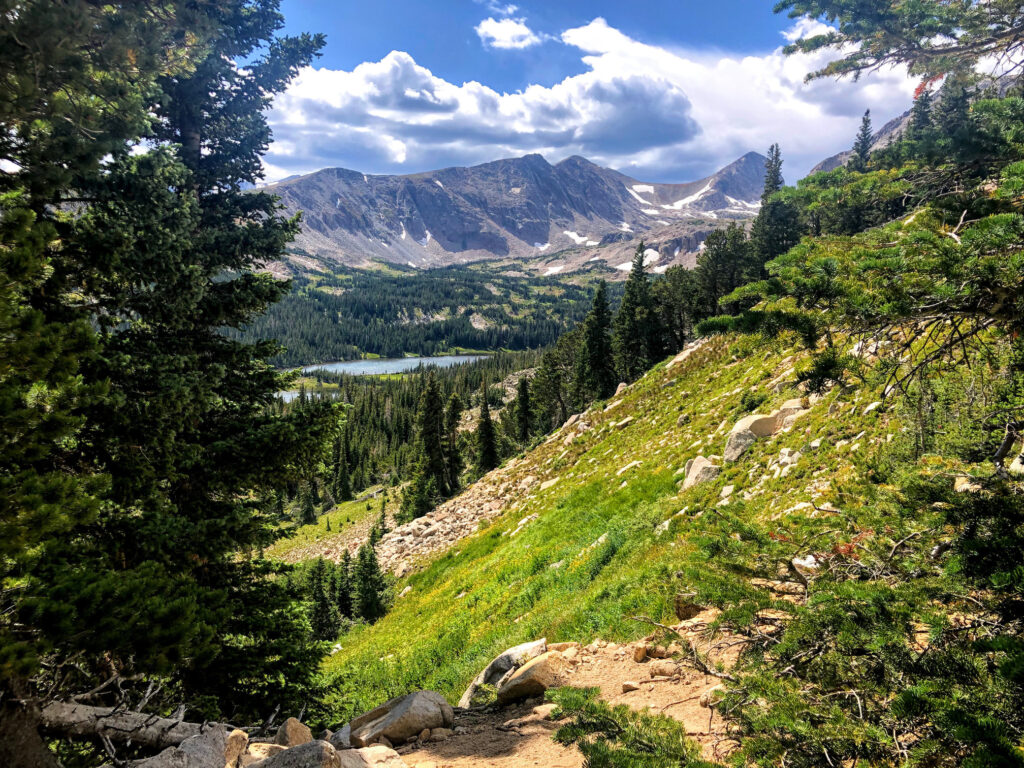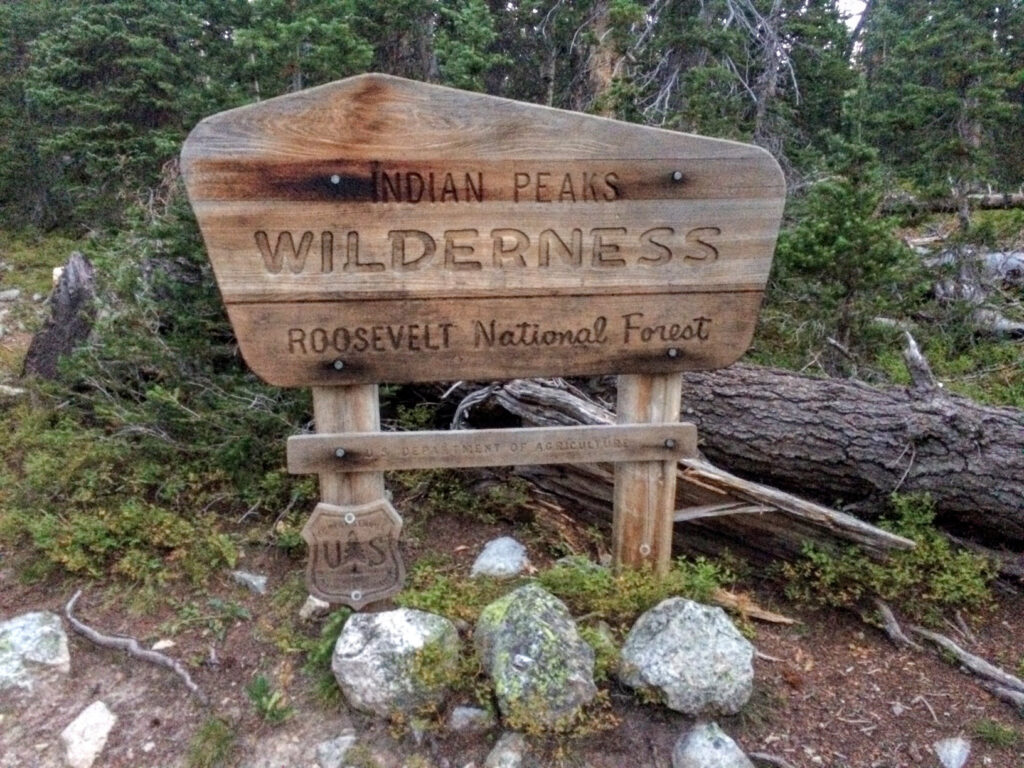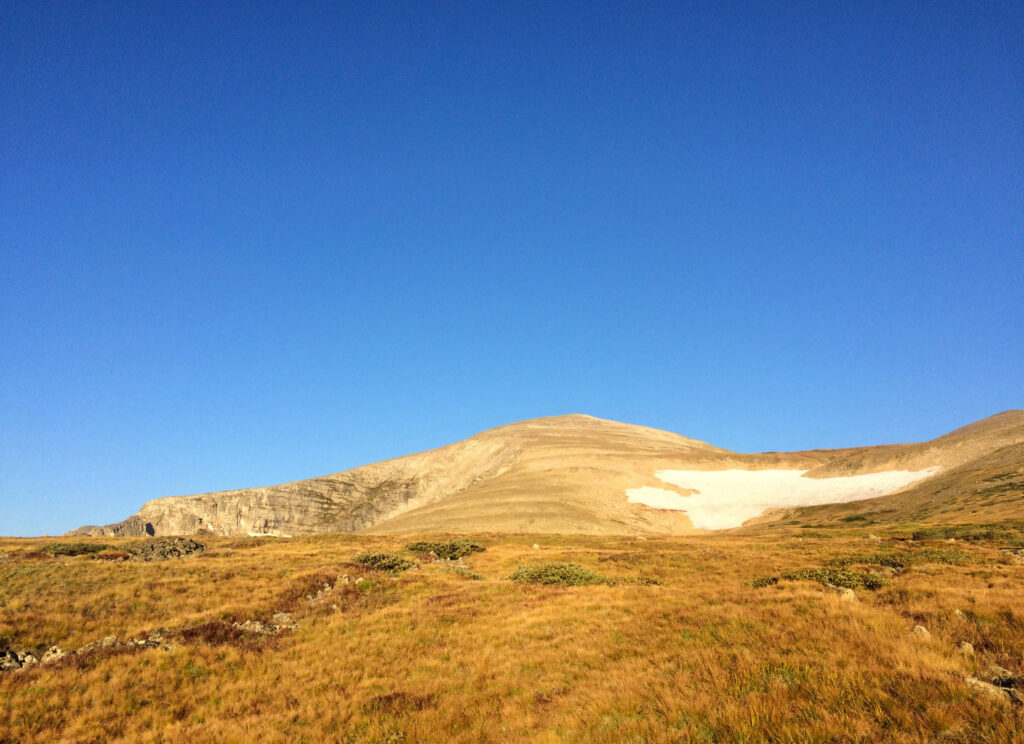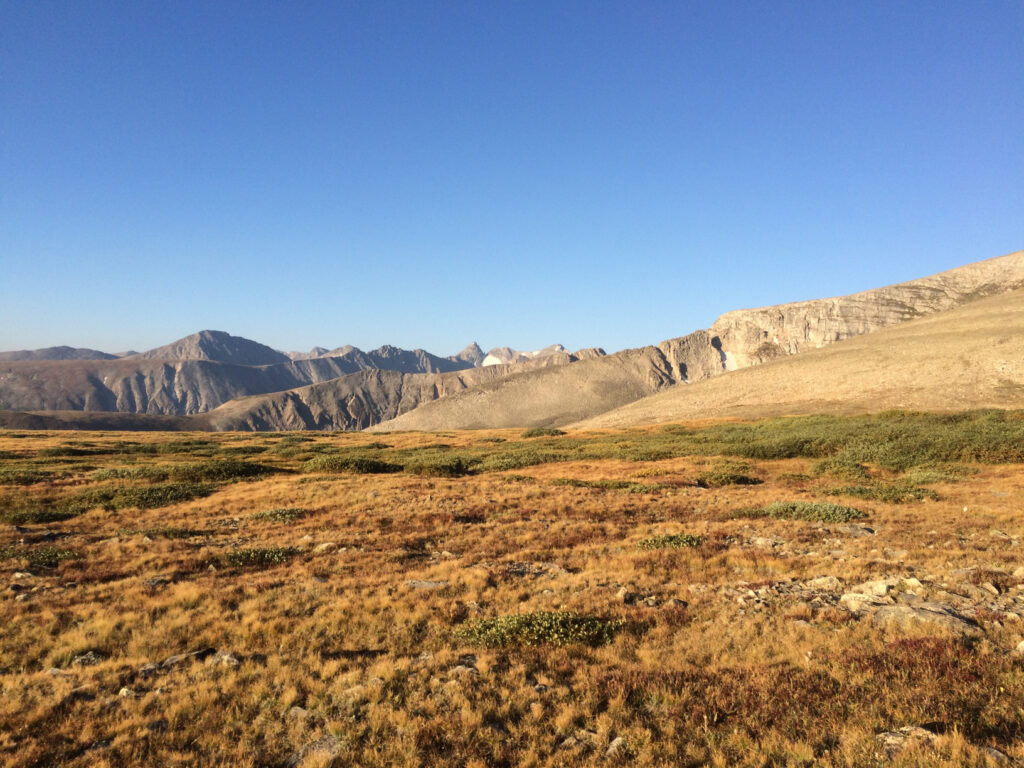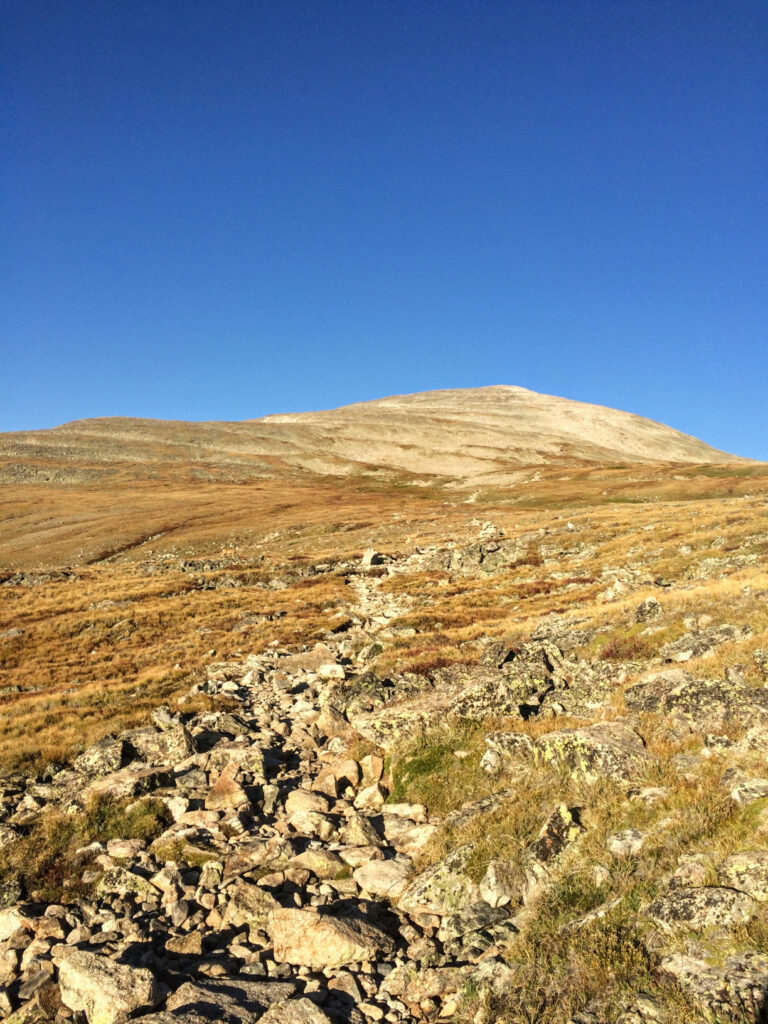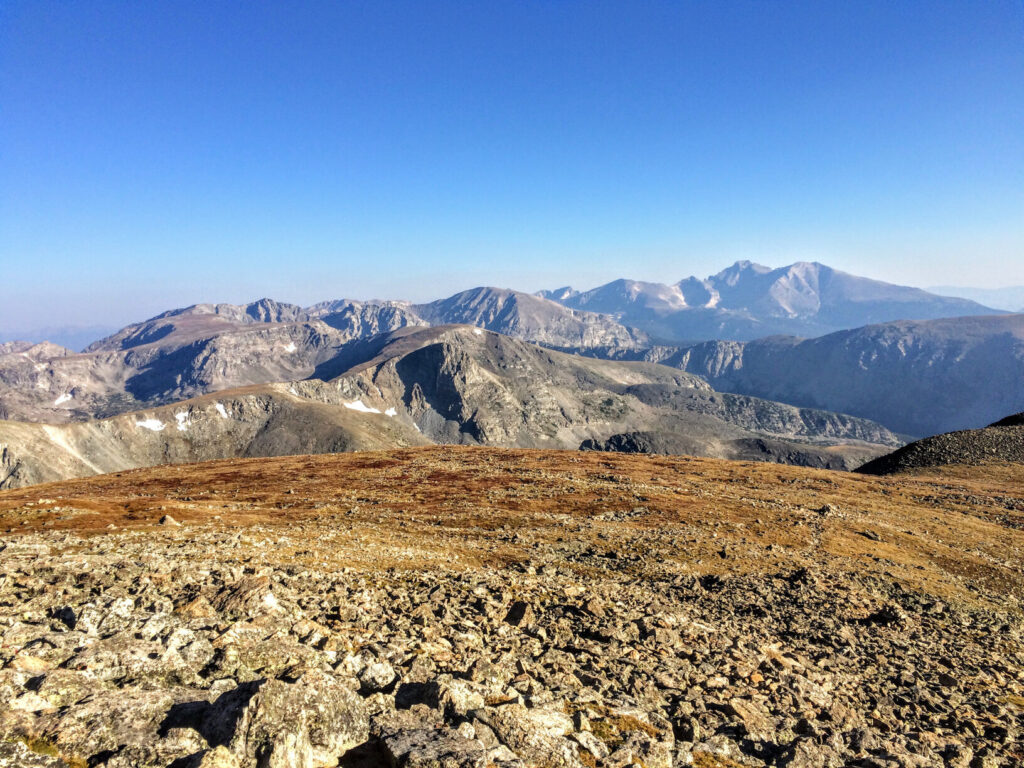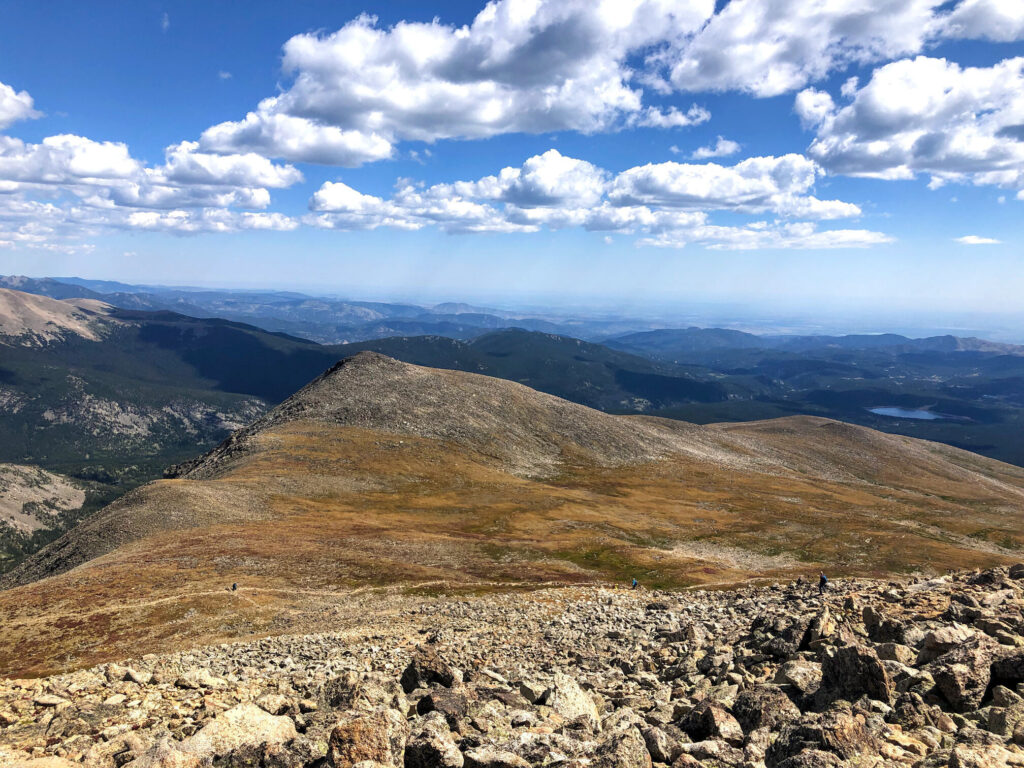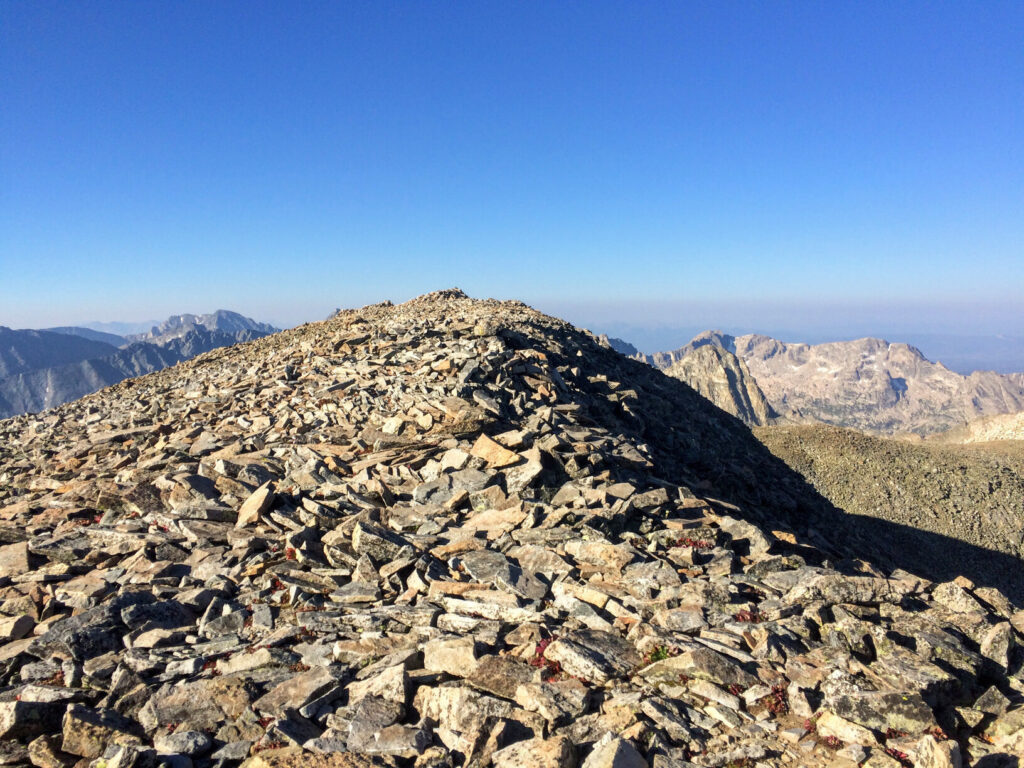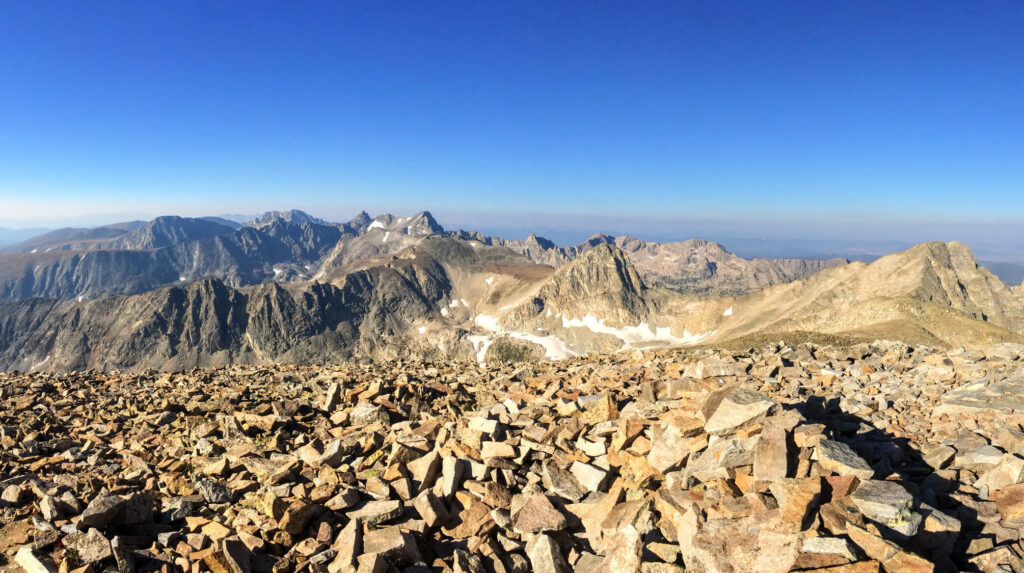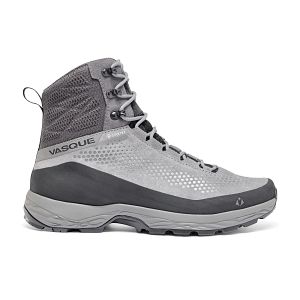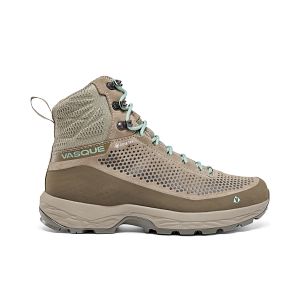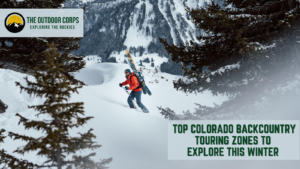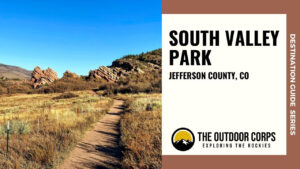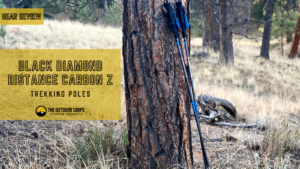Mount Audubon (13,223ft.) is a 13er mountain located in Colorado’s Front Range and, more specifically, within the stunning Indian Peaks Wilderness of Roosevelt National Forest. Near Ward, CO and not far from the town of Boulder, Mount Audubon offers an excellent introduction for those interested in high altitude 13er mountain hiking, with fantastic views of the Continental Divide, Rocky Mountain National Park, and more.
The standard route to the summit of Mount Audubon is via its North Slope. The route begins at the Mitchell Lake Trailhead and is 4.0 miles to the summit (8.0 miles roundtrip, approximately 2,700ft. elevation gain). The vast majority of the hike is via an established Class 1 trail, with about a .5 mile of Class 2 boulder and talus scrambling to reach the summit. For those feeling especially ambitious, a popular option is to extend the outing and summit the adjoining Paiute Peak (13,088ft.).
HIKE REVIEW SERIES: Mount Audubon
Mountain Information
Mount Audubon, located in Colorado’s Indian Peaks Wilderness, is named after American ornithologist John James Audubon of National Audubon Society fame. At an elevation of 13,223ft., Mount Audubon is a very popular alternative to Rocky Mountain National Park trails and Front Range 14er peaks that often see much heavier use. As a moderately challenging 13er, Mount Audubon is a great training hike to prepare for far more strenuous 13er and 14er mountains around Colorado. Indeed, Mount Audubon’s proximity to the Denver/Boulder metro area makes this an appealing early season option with easy access.
Mount Audubon
- Summit Elevation: 13,223ft.
- Range: Front
- Sub-Range: Indian Peaks
- Location: Indian Peaks Wilderness
- Nearest Town: Ward
Trail Guide
Route Information
- Route: North Slope
- Class: 2
- Type: Out-and-Back
- Trailhead: Mitchell Lake Trailhead
- Trailhead Elevation: 10,517ft.
- Route Length: 8.0 miles
- Elevation Gain: 2,706ft.
Route Overview
The North Slope route to Mount Audubon begins at the Mitchell Lake Trailhead, not far from the Brainard Lake Recreation Area entrance to the Indian Peaks Wilderness. The trailhead has a large parking area for about 70 vehicles, but given the close proximity to Denver and Boulder, only early arrivals are likely to secure a parking spot here during peak season.
From the northeast section of the Mitchell Lake Trailhead parking area, the majority Class 1 route to Mount Audubon begins along the Beaver Creek Trail. At about 1.7 miles into the hike, the route veers west onto the Mount Audubon Trail. With about .5 miles remaining toward the Mount Audubon summit, some moderately challenging Class 2 scrambling is required to reach the peak.
Route Steps
- Step 1 - The North Slope route to Mount Audubon begins along the Beaver Creek Trail, accessed from the northeast portion of the Mitchell Lake Trailhead parking area. A trail sign for the Beaver Creek Trail indicates you’re on the correct path toward Mount Audubon.
- Step 2 - As you hike along the Beaver Creek Trail, pass the beautiful Indian Peaks Wilderness sign, which also notes that you’re within the Roosevelt National Forest.
- Step 3 - The trail heads out of the dense forest fairly quickly, with expansive views of the Indian Peaks Wilderness to the southwest.
- Step 4 - Above treeline and at about 1.7 miles into the route, the Beaver Creek Trail will meet a junction with the Mount Audubon Trail. Turn left onto the Mount Audubon Trail to continue the ascent.
- Step 5 - Mount Audubon comes into view, but don’t be fooled because there is plenty of hiking and elevation gain remaining. Continue to hike along the trail through the beautiful tundra toward the peak.
- Step 6 - As you continue to ascend, more stunning views to the southwest emerge.
- Step 7 - Continuing the ascent along the rocky trail through the tundra, the East Slope of Mount Audubon comes into even better view.
- Step 8 - Reach the saddle to the northeast of Mount Audubon’s summit. You’ll have fantastic views looking north into Rocky Mountain National Park (notably Longs Peak). A trail to the summit heads left, via the North Slope. Pay close attention here as this trail can be easy to miss.
- Step 9 - Scramble up the Class 2 ascent toward the summit. This section is steep and strenuous, amounting to a moderate challenge. Cairns guide the way. The featured photo looks back toward the saddle to illustrate the steepness of the scramble.
- Step 10 - Mount Audubon’s summit is now within view along with sweeping vistas of surrounding mountains in the Indian Peaks Wilderness, Rocky Mountain National Park, and more.
- Step 11 - Upon reaching the summit of Mount Audubon, the views are expansive and awe-inspiring. To the right of the featured photograph is the view to the west, with Paiute Peak (13,088ft.) on the right, which is a great add-on mountain for those inclined for more adventure. To the center-right is the stunning Mount Toll (12,979ft.).
- Step 12 - The overall return trip back to the Mitchell Lake Trailhead from the Mount Audubon summit is 4.0 miles. Descend Mount Audubon and return the way you ascended. End back at the trailhead’s main parking area and enjoy the accomplishment of climbing a fantastic Colorado 13er.
Planning Tips
Getting There
From CO-72 (Peak-to-Peak Hwy.), make a quick sharp turn onto Brainard Lake Rd., heading toward the Brainard Lake Recreation Area entrance of the Indian Peaks Wilderness. Reach the entrance station and continue along Brainard Lake Rd. for about 5.0 miles until reaching Mitchell Lake Rd. Turn left onto Mitchell Lake Rd. and reach the trailhead parking area.
Parking
The hike to Mount Audubon begins at the Mitchell Lake Trailhead, which is accessed via the Brainard Lake Recreation Area. Be prepared to reserve day use parking ahead and pay a $14 fee (or use your Annual National Parks Pass) when entering the wilderness at the Brainard Lake entrance. The Mitchell Lake Trailhead has a decent size parking lot for approximately 70 vehicles. However, given this area’s popularity, all of these spots fill very quickly in the morning during peak season.
Camping
Backcountry camping is not permitted along the Mount Audubon Trail, which is in the Four Lakes Backcountry Zone, from May 1 through November 30. However, backcountry camping is allowed elsewhere in the Indian Peaks Wilderness and requires a permit between June 1 through September 15. Review the Indian Peaks Wilderness Backcountry Zone Map to select the best zone for your outing.
For established campgrounds, the Pawnee Campground is only a few minutes drive from the Mitchell Lake Trailhead. Campsites are $23 per site and are reservable in advance from July 2 through September 11.
Pets
Dogs are permitted on leash. Please note that high altitude hikes that require some scrambling to the summit, such as the hike to Mount Audubon, could pose challenges for some dogs. If you do opt to bring your pet, please abide by wilderness regulations.
Weather Forecast
Always check the weather forecast before venturing into alpine country. Thunderstorms and lightning are frequent occurrences in Colorado during the summer time. Plan ahead and if the weather does not look ideal, try your Mount Audubon 13er summit adventure for another day. Safety first!
RECOMMENDED HIKING APPAREL AND GEAR
Ten Essentials
When hiking in Colorado, you should always be prepared for sudden changes in weather, especially on 13er and 14er hikes. Therefore, you should carry the appropriate type and amount of gear, clothing, food, water, and other essentials. For certain, make sure that your packing list includes the Ten Essentials. It’s best to always be prepared!
Hiking Boots
The Vasque Torre hiking boots are incredibly lightweight, provide excellent traction, and are quite affordable for their versatility. We like the Vasque Torre’s for everyday hiking that includes a bit of scrambling. In addition, with the “GORE-TEX” construction, you don’t have to worry about damp feet if the weather turns or you have to splash through streams or puddles along the way.
Hiking Pants
We love prAna’s hiking pants for their quality and versatility. Indeed, their Zion (for men) and Halle (for women) are great on- and off-trail, especially for travel. Constructed with a durable UPF-50 fabric, a water-repellant finish, and utility pockets, these have become a staple in our wardrobe. Remember that it can be rather chilly at alpine elevations, so consider hiking pants rather than shorts (both for warmth and sun protection).
Hiking Shirt
It can get chilly during alpine outings, particularly when you start early in the morning. Therefore, we typically opt for a long sleeve but lightweight shirt to keep us warm when it’s cold, but keeps us cool when we are working up a sweat later in the day. The no-cotton rule applies to shirts just as it does for pants and other articles of clothing.
Our preferred hiking shirt in the summer is Outdoor Research’s Echo Hoody because of its UPF sun protection qualities and lightweight (4oz.) breathable construction. The shirt has a hood for added neck protection and has thumbholes to protect your hands from sun exposure, if you opt to not wear sun gloves. Outdoor Research also makes different varieties of the Echo shirt (e.g., quarter zip, long sleeve without hood, t-shirt, etc.) if you prefer another style.
Insulated Jacket
The Arc’teryx Atom is easily our favorite insulated jacket. Yes, there may be lighter weight alternatives on the market, but we love the style, fit, packability, and function. Wear the Atom during early morning starts or when you reach the mountain summit. It’s a great addition to an outdoors wardrobe and comes in handy when the temperature dips.
Hiking Socks
For most of our hiking needs, we like Darn Tough socks over the multitude of options on the market. They last long and have an ironclad guarantee. In addition, Darn Tough has a variety of designs, ankle lengths, and cushioning options to choose from. We like the Hiker quarter length with light cushioning.
Headwear/Face Covering
We often wear a Buff as a neck gaiter to protect from the sun, given its UPF 50 protective construction. Buffs are also a great option to use as a face covering on the trail. In fact, there are 12+ ways of wearing a Buff, so it’s a versatile piece of gear.
Day Pack
To summit Mount Audubon, we like Deuter’s Speed Lite for its lightweight design and versatility. This pack comes in a variety of sizes (we like around 20L) and has enough storage for a day hike, with ample compartments to aid in equipment/content organization. In addition, side pockets are available to store Nalgene bottles or other equipment, but it also is hydration reservoir compatible. We think the 21L version has the perfect capacity, but again various sizes are available.
Trekking Poles
Although trekking poles are optional and a matter of preference, we prefer to use them for added stability. We recommend choosing the lightest weight poles your budget can afford. The Black Diamond Distance Z is our top choice due to its extremely lightweight construction. If you are seeking just one pole, rather than two, consider Gossamer Gear’s LT5, which can be purchased individually.
Helmet
There are plenty of good, versatile helmets in the market place, but we favor Petzl’s helmets for mixed use – mountaineering, climbing, etc. Plus, Petzl is known for making high quality climbing equipment and is a brand we trust with such a vital piece of safety gear. The Petzl Sirocco is our go-to option for its comfort and design, but Petzl has a wide array of quality helmets at various price points.
recommended books
Our favorite guidebook on the area is “Colorado’s Indian Peaks: Classic Hikes and Climbs,” because it is well-written and thoroughly covers the best hikes in Indian Peaks Wilderness. Further, this guidebook was authored by Gerry Roach, who is the leading authority on Colorado’s 14er and 13er hikes. Of course, if you intend to venture into other Colorado wilderness areas beyond Indian Peaks Wilderness, consider a book the covers a wider breadth of area such as “The Complete Guide to Colorado’s Wilderness Areas.” This guidebook is great because it provides excellent information on each wilderness area, including their best hikes and multi-day backcountry outings.
In addition, we recommend bringing along a topographical map of the area, such as the National Geographic Trails Illustrated Map for the Indian Peaks Wilderness. Alternatively, the Sky Terrain Map, which covers Southern Rocky Mountain National Park and Indian Peaks Wilderness, is another excellent option. Lastly, we included a couple of our favorite field guides for plant and bird identification to aid in the enjoyment of the outdoors.
- Colorado’s Indian Peaks: Classic Hikes and Climbs
- Colorado’s Thirteeners: From Hikes to Climbs
- The Complete Guide to Colorado’s Wilderness Areas
- Indian Peaks, Gold Hill – National Geographic Trails Illustrated Map
- Southern Rocky Mountain National Park & Indian Peaks Wilderness Trail Map
- Rocky Mountain Wildflowers Field Guide
- Sibley Birds West: Field Guide to Birds of Western North America
- American Birding Association Field Guide to the Birds of Colorado
- Mammals of Colorado Field Guide
- Roadside Geology of Colorado
Disclosure: Please note that this post contains affiliate links. We may receive a small commission if you buy a product or service through an affiliate link. This revenue helps us provide readers with helpful content to plan amazing adventures.

